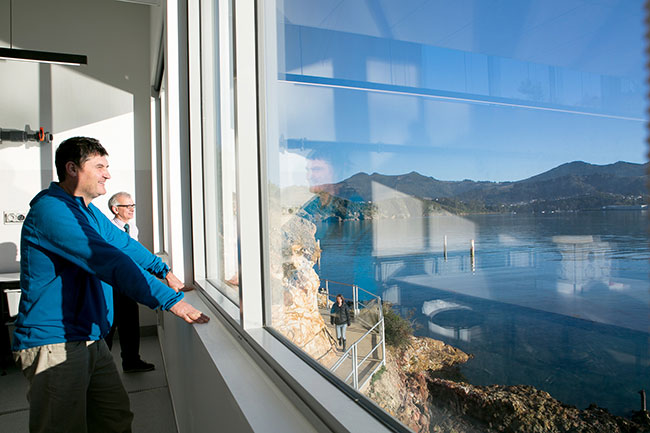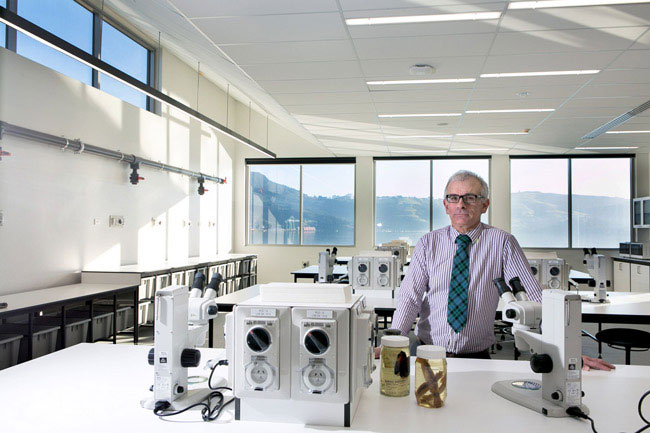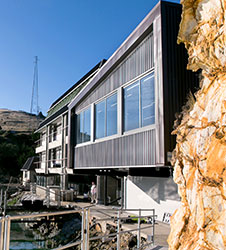
Otago now has its first University-level teaching laboratory at Portobello - with a six-metre display tank and large picture windows overlooking the harbour.
Students from the Department of Marine Science have labs of up to four hours in the $5 million, 42-seat facility and other departments are more than welcome as well, Portobello Laboratory Manager Dr Doug Mackie says.
The site has never been home to a purpose-built, dedicated, university-level teaching laboratory since the University took it over in the 1950s, and having a six-metre display tank means "instead of just talking about a fish, you can point to it".

Displays of three habitats are being built up in separate areas of the tank - Fiordland, Otago Harbour, and Otago's open waters.
New larger, under-cover touch tanks full of sea creatures are in an extension to the New Zealand Marine Studies Centre building, for secondary school pupils studying with the centre.
A new seawater system pumps 60,000 litres of seawater through the complex every hour - up from 35,000 litres - eliminating the enormous amount of attention staff had to pay to water flows and oxygen levels to keep sea creatures alive, Dr Mackie says.
At full capacity, the system can pump 1.4 million litres of seawater a day, instead of 900,000.
A 'dry' work area in a 20-seat break-out room has proved so popular with it views of the harbour, post-graduate students often have to be ushered out so under-graduate classes can begin.
The ground floor of the new building houses temperature and light-controlled rooms for research, a dive changing room, showers, toilets and a covered outside area known as the under-croft.
People can do wet, muddy work there but still be protected from the elements, and the space also allows for drying dive gear and storing dive tanks, he says.
Two large holding ponds - underneath an existing three-storey research laboratory building - have been refurbished as well.
They were built in 1903 for a fish hatchery that was on the site until the University renovated it to create a Marine Biological Station.
In tandem with the project, the facility was also connected to the world with high-speed internet connections, by removing a low capacity microwave dish and installing fibre optic cable. The laboratory is the primary research facility for the Department of Marine Science. The project was completed in July 2017.
An old, much smaller two-storey 1960s office and public aquarium building had to be demolished before work began. It was an earthquake risk and could no longer cater for modern teaching standards, so had been vacant for four years.

Removing that building involved dismantling it piece by piece, loading those pieces into a skip, and repeatedly lifting the skip off the site by crane.It was the smallest of the main buildings on the site; the neighbouring three-storey 1987 building housing New Zealand's premier marine research laboratory is used extensively, as is the New Zealand Marine Studies Centre, which is further up the hill and was built in 1996.
The project also involved cliff stabilisation work, replacing electrical mains and installing safety rails along an exposed, seaside path.
The team
Project Manager: Campus Development Division
Architect: McCoy Wixon Architect
Services Engineer: Beca
Quantity Surveyor: Rawlinsons
Contractor: Cook Brothers Construction
